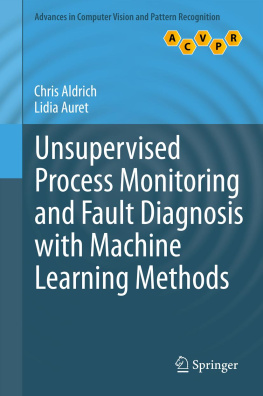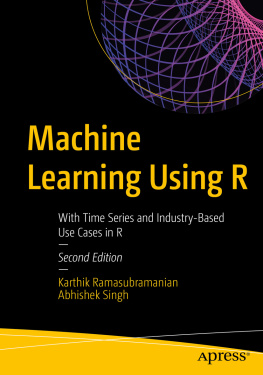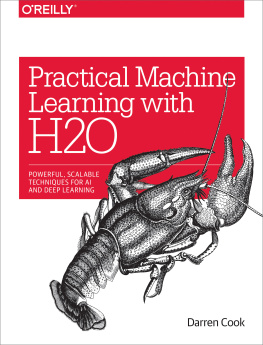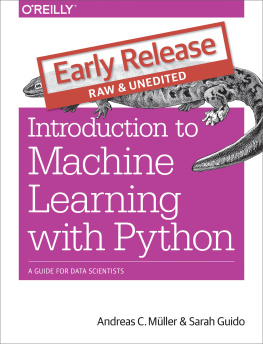1.1 Background
Technological advances in the process industries in recent years have resulted in increasingly complicated processes, systems and products that pose considerable challenges in their design, analysis, manufacturing and management for successful operation and use over their life cycles (Maurya et al. ). As a consequence, not only do the maintenance and management of complex process equipment and processes, and their integrated operation, play a crucial role in ensuring the safety of plant personnel and the environment, but they are also crucial to the timely delivery of quality products in an environmentally responsible way. Since the management of process plants remains a largely manual activity, the timely detection of abnormal events and diagnosis of its probable causes to enable appropriate supervisory control decisions and actions to bring the process back to a normal, safe operating state become all the more important. Without a doubt, there is still major scope for process improvement in all these aspects of plant operation, including safety, profitability and environmental responsibility, as discussed in more detail below.
1.1.1 Safe Process Operation
Industrial statistics show that about 70 % of industrial accidents are caused by human errors (Venkatasubramanian et al. ).
Although the occurrence of major industrial accidents such as mentioned above is not common, minor accidents are very frequent and occur almost daily, resulting in many occupational injuries and sickness and costing billions of dollars every year (Venkatasubramanian et al. ). This suggests that there is still a long way to go to enhance the performance of human operators to improve their diagnostic capability and good judgment.
1.1.2 Profitable Operation
Industrial processes are under increased pressure to meet the changing demands of society. For example, in the mining sector, processes have to be adapted to deal with more complex or refractory ores, as more accessible resources dwindle. The same applies in the oil industry, where the search for large repositories is increasingly focusing on deep-sea beds, as many of the worlds largest fields, from Ghawar in Saudi Arabia to Prudhoe Bay in Alaska, are becoming depleted. At present, deep-sea rigs are capable of reaching down more than 12 km twice as deep as a decade ago.
With globalization and increased competition, profit margins of companies are under pressure, and companies have to be more responsive to varying customer demands, without sacrificing product and process quality. This has led to the development of quality control management methodologies, like Six Sigma and ISO 9000, and other management programs to assist organizations in addressing some of these challenges.
In addition, modern process operations have become more complex owing to plant-wide integration and high-level automation of a large variety of process tasks (Jms-Jounela ). For example, recycling of process streams is widely established to ensure efficient material and energy usage. Process plants have become intricate virtual information networks, with significant interactions among various subsystems and components. Such interconnectivity facilitates the integration of operational tasks to achieve broader business strategic goals but invariably complicates other tasks, like planning and scheduling, supervisory control and diagnosis of process operations.
1.1.3 Environmentally Responsible Operation
More recently, regulatory frameworks have become more stringent to force better control of the environmental risks posed by industrial activities. Likewise, safety and health policies and practices are now priority issues in the modern process plants. As a result, systematic frameworks have been initiated, including process hazard analysis and abnormal event management and product life cycle management. Process hazard analysis and abnormal event management are aimed at ensuring process safety, while product life cycle management places obligatory stewardship responsibilities on an organization throughout the life cycles of its entire product range, that is, from conception to design and manufacture, service and disposal (Venkatasubramanian ).
1.2 Trends in Process Monitoring and Fault Diagnosis
1.2.1 Instrumentation
As a result, companies are making substantial investments in plant automation as a means to achieve their operational and business goals. This includes heavy investment in instrumentation to enable real time monitoring of process units and streams. New sensor technologies such as acoustic or vibrational signal monitoring and computer vision systems have been introduced in, among other, milling plants, multiphase processes, food processing and combustion processes (Zeng and Forssberg ). As a consequence, huge volumes of data are increasingly being generated in modern process plants. These data sets do not only contain massive numbers of samples but can also contain very large numbers of variables.
For example, in spectroscopy, data are obtained by exposing a chemical sample to an energy source and recording the resulting absorbance as a continuous trace over a range of wavelengths. Digitization of the trace at appropriate intervals (wavelengths) forms sets of variables that in pyrolytic mass spectroscopy, near-infrared spectroscopy and infrared spectroscopy yield approximately 200, 700 and 1,700 such variables for each chemical sample, respectively (Krzanowski and Marriott ) and potentiometric measurements to monitor corrosion. Likewise, where image analysis is used to monitor particulate feeds or products in comminution systems, power plants or metallurgical furnaces, each pixel in the image could represent a variable, which could easily lead to millions of variables where high-resolution two-dimensional images are concerned.
1.2.2 Information Technology Hardware
The well-documented sustained exponential growth in computational power and communication has led to profound change in virtually all areas of technology in recent decades and will apparently continue to do so in the foreseeable future. In 1965, Gordon Moore, a co-founder of Intel, first observed that the density of components in computer chips had doubled each year since 1958, and this trend was likely to continue for at least a decade. In 1975, Dr Moore modified his prediction, observing that component density was doubling every 2 years. As a consequence, the performance of personal computers has also roughly doubled every 18 months since then, conforming to what has becoming known as Moores law.










![Daniel D. Gutierrez [Daniel D. Gutierrez] - Machine Learning and Data Science: An Introduction to Statistical Learning Methods with R](/uploads/posts/book/119585/thumbs/daniel-d-gutierrez-daniel-d-gutierrez-machine.jpg)

